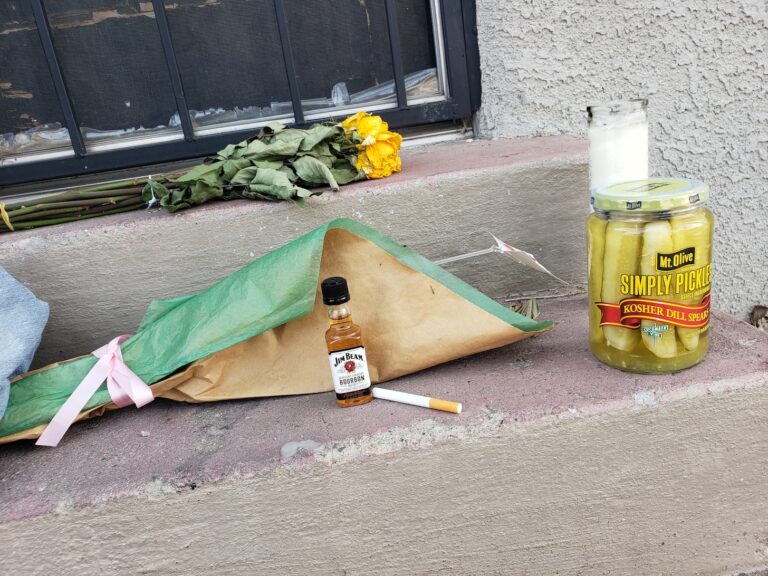It’s your tax dollars at work—the ones you spend on booze, anyway. All operating costs of Bernalillo County’s detox program are covered by a $1.7 million grant provided by the Liquor Excise Tax. The Metropolitan Assessment and Treatment Services center (MATS) opened its doors with a three- to five-day detox program on Halloween weekend, 2005. Immediately, there were "heads in the beds," as County Commissioner Deanna Archuleta says. "We could put in a hundred beds and have people who still needed access," Archuleta says. The service is free to all county residents, and though long-term goals include expanding the detox program from 50 beds, the next step is opening a 28-day treatment program in January 2007. "The problem is there’s not a lot of places in the community that help people in an in-patient setting if they don’t have financial backing."Archuleta opens the door to a room that looks like what you would expect of a hospital, with neat but small and thin-looking mattresses, bare-bones furnishings. These additional 24 beds are where the hundreds of people who will go through the treatment program next year will stay. "We had to scale it back six months ago, because the city pulled out of their relationship with the county to fund this program." Valorie Vigil, director of the Family and Community Services Department, tells the story differently. The county invited into the building the city’s Residential Recovery Program, which operates on a budget of city money to the tune of $600,000, Vigil says in an e-mail. "As the city funded the program, there was an agreement between the county and city that the city would not pay for use of space," she wrote. In June, the city received an e-mail from the county saying the MATS program would be using all of the space on the first floor, Vigil says. The city was asked to vacate the premises by July 1, she adds. "It’s a tenacious relationship," Archuleta says. The curricula are set, says Dwight Dias, the MATS detox manager. The policies and procedures have been written. "Once the funding comes down the pike, we can open those doors. We are ready. If we had the money and the staffing, we could open them today."Homeless people make up a large portion of the clientele at MATS. The three major hospitals in Albuquerque—Lovelace, UNM and Presbyterian—are each using three to five beds every night to care for people who are coming off a drug or processing alcohol and who have a minor injury as a result of their state. "Right now, if we look at ambulance deliveries alone, there’s about $11 million that is lost in this community to beds being taken up in the emergency room by individuals who could really be better served at this facility," Archuleta says. Further, the ER is not an ideal setting for detoxification, a process that requires a controlled and quiet environment. Those three hospitals will each be giving MATS $300,000 next year (a total of $900,000) to create a medical model at the facility. Nurses, techs and doctors will be on hand to help with wounds so people who are detoxifying don’t have to take up beds in the ER. MATS provides a van to pick people up from the hospitals or from off the street. All people who admit themselves into MATS must do so voluntarily. "If an individual doesn’t self select into a program like this, they’re not likely to be successful," Archuleta says. There can be no court-ordered rehab at the facility, though people can use a promise to stay at the center as a bargaining chip when talking to a judge. The process works like this: Clients enter the reception area and are admitted through two large wooden double doors. They are dressed in clean clothes. Their soiled items are sent in for washing, ready for them to retrieve when they leave a few days later. They are introduced to other clients and attend classes and 12-step meetings. All of the counselors have either undergone treatment themselves or have been trained specifically in detoxification and rehabilitation. "We want them to understand the symptomology and exactly what they can expect going through this process," Dias says.The three- to five- day program does not begin to address the causes of their addictions, which pointed to a need for a longer-term, in-patient treatment center. "What happens when you’re involved in substance abuse is your morals and values become very distorted," Dias says. The program seeks to help folks redefine those things for themselves. Similarly, clients are connected with doctors. From their first day out of the center, there is someone to help them with the various physical ailments resulting from the toll long-term drug use takes on the body.Other agencies have been given, free of charge, furnished office space in the building as well. "When they leave here, they’ve already got connections. They’re already enrolled in programs. We’re trying to make this as seamless as possible," says Kevin Kinzie, the DWI program coordinator at the Office of the County Manager.In line with that goal, the Turquoise Lodge, a 38-bed treatment center in the South Valley run by the Department of Health, is moving into the upstairs portion of the building that MATS is in at 5901 Zuni SE by Nov. 1. That program is a full-blown medical detoxification center with hospital accreditation that accepts people from all over the state. Similarly, funds have been found for transitional housing that should be built by the end of next year. "It’s been a long time coming, but quicker than most bureaucracy moves," Archuleta says.
Newscity
MATS will send vans out to pick people up. Call 468-1555.
Call 346-0660 ext. 247 with news tips. E-mail your guest editorial or letter to letters@alibi.com.


